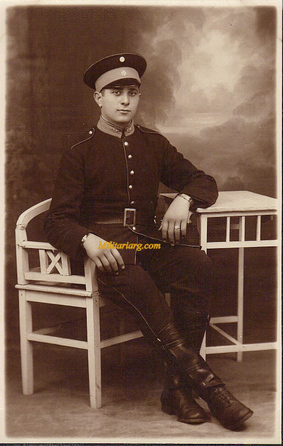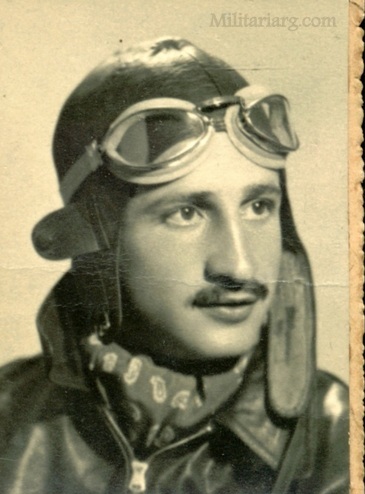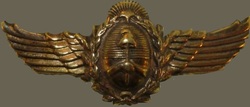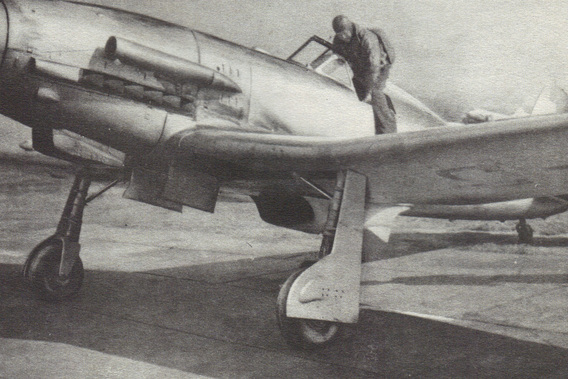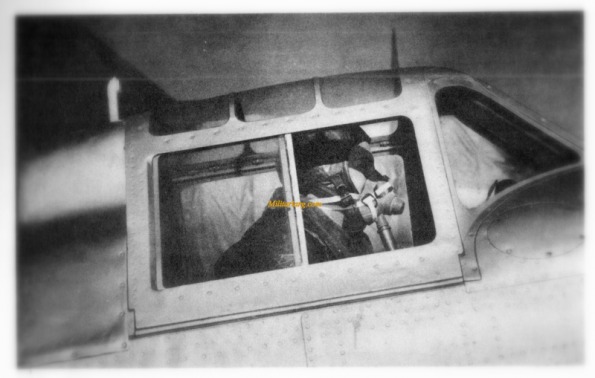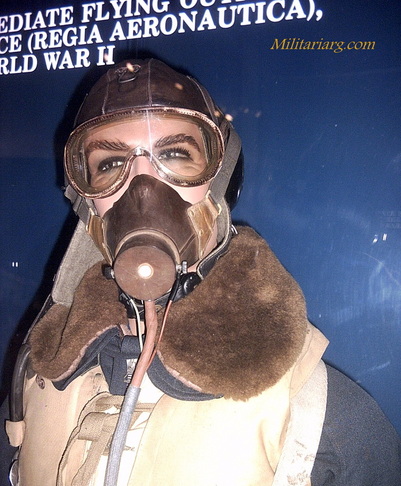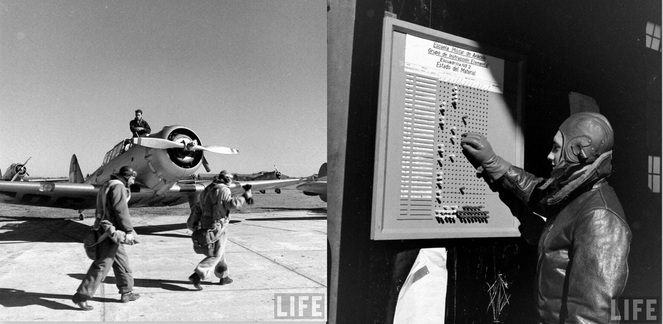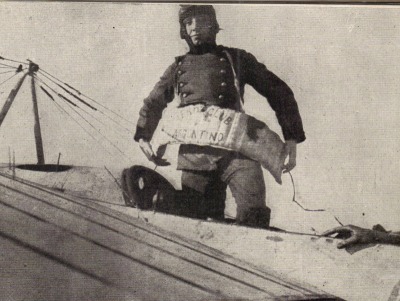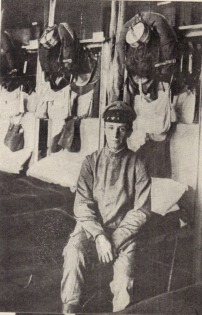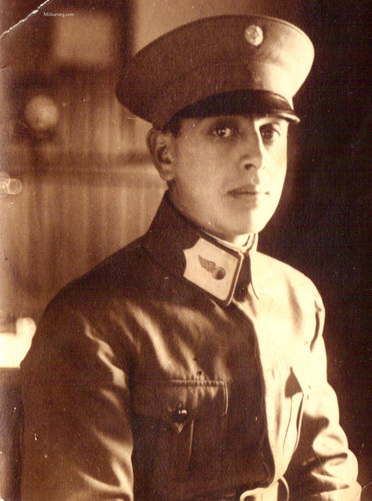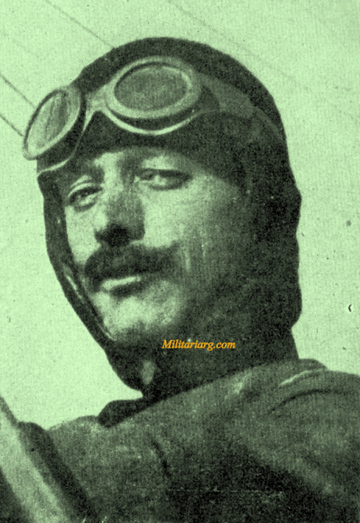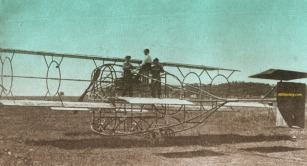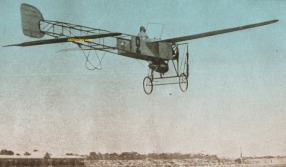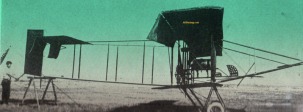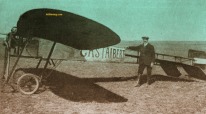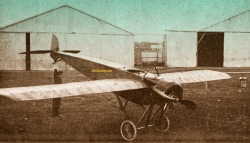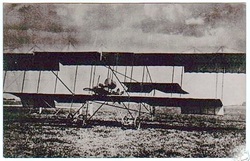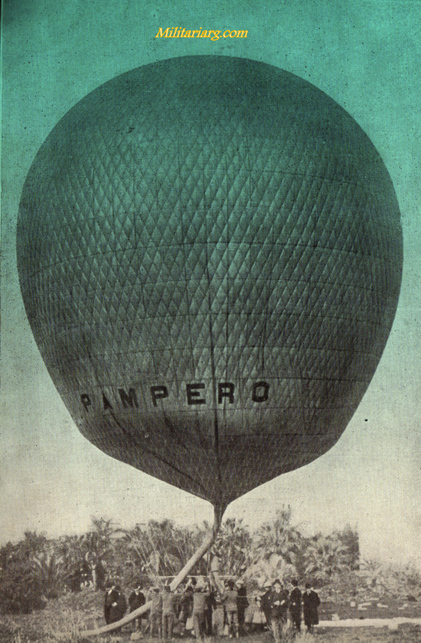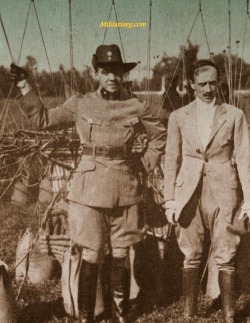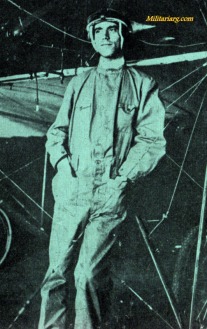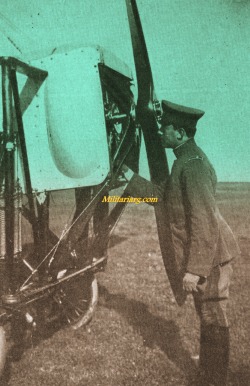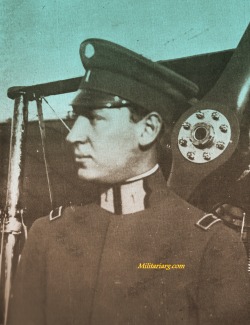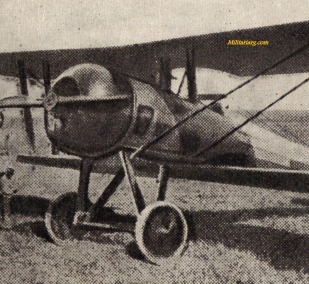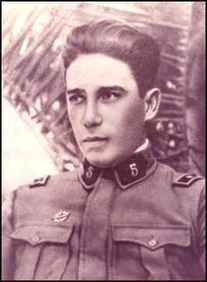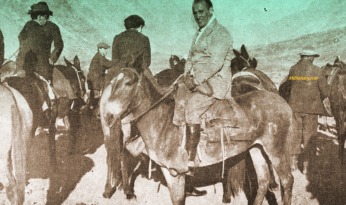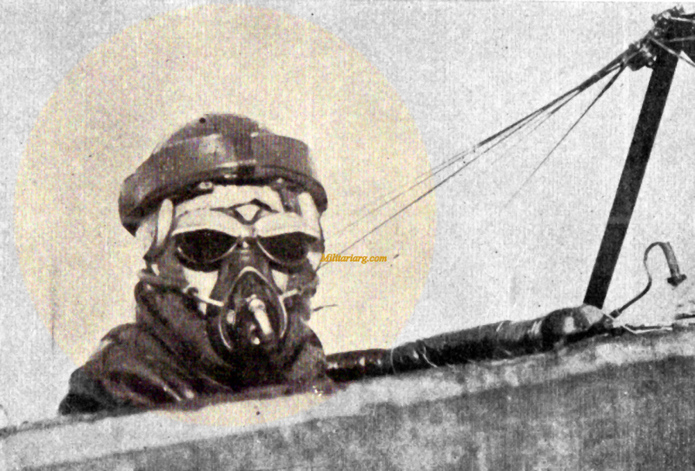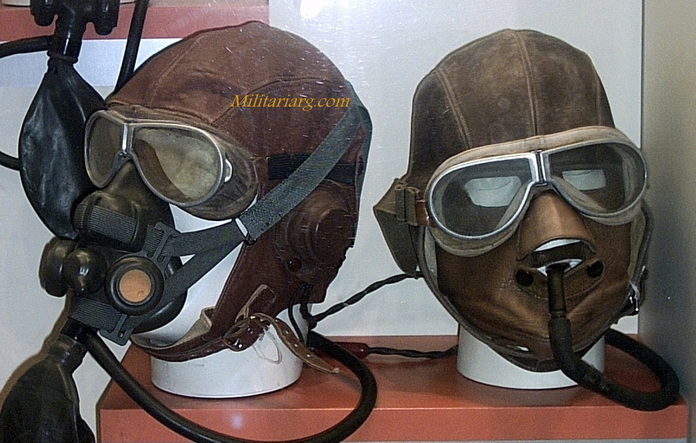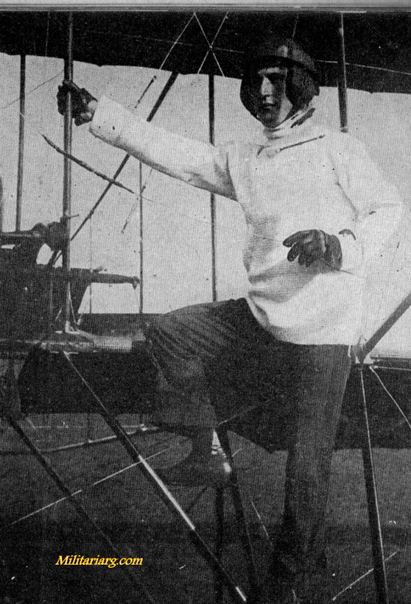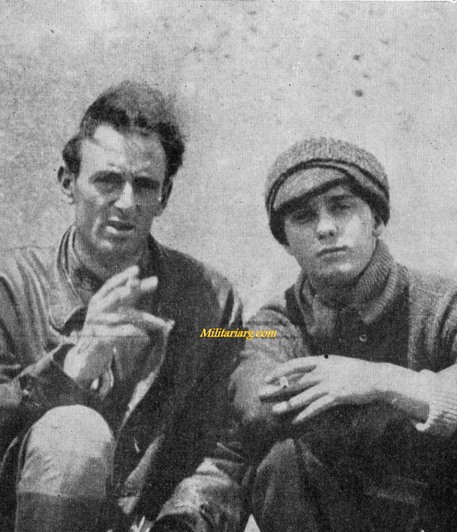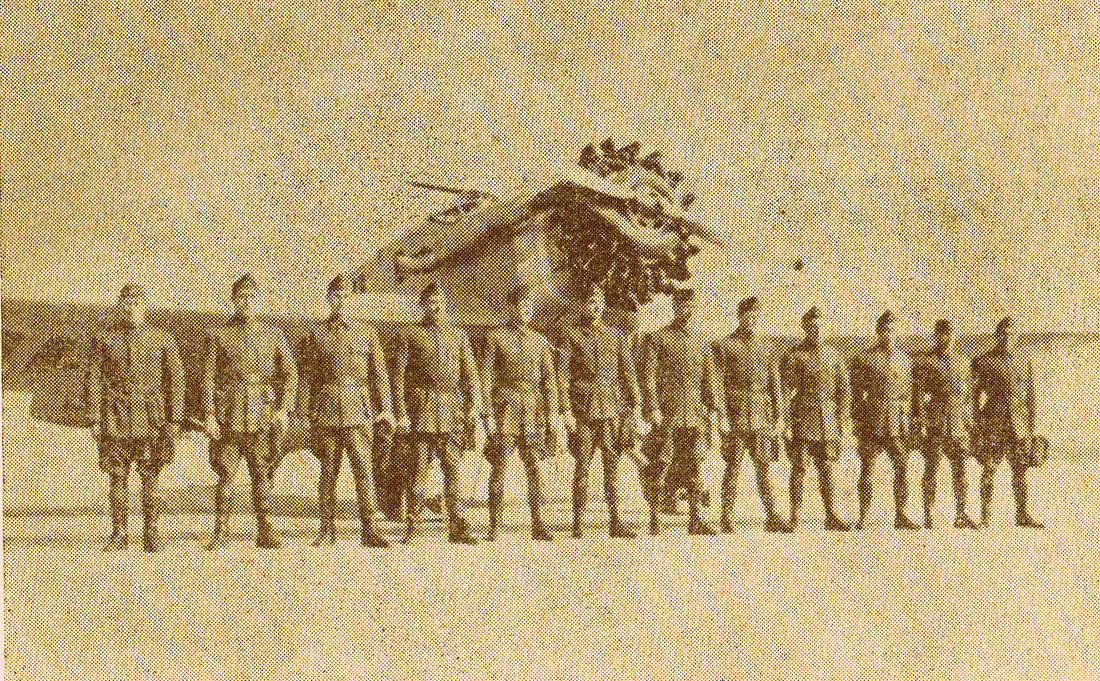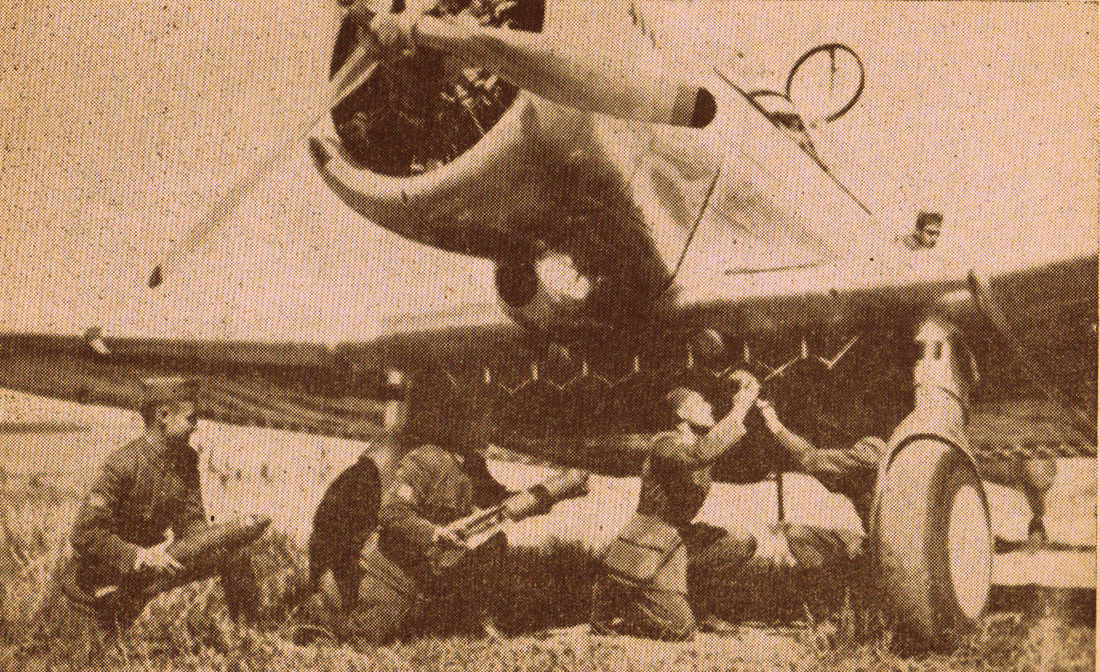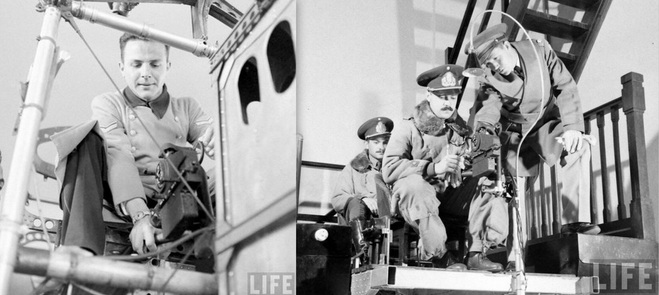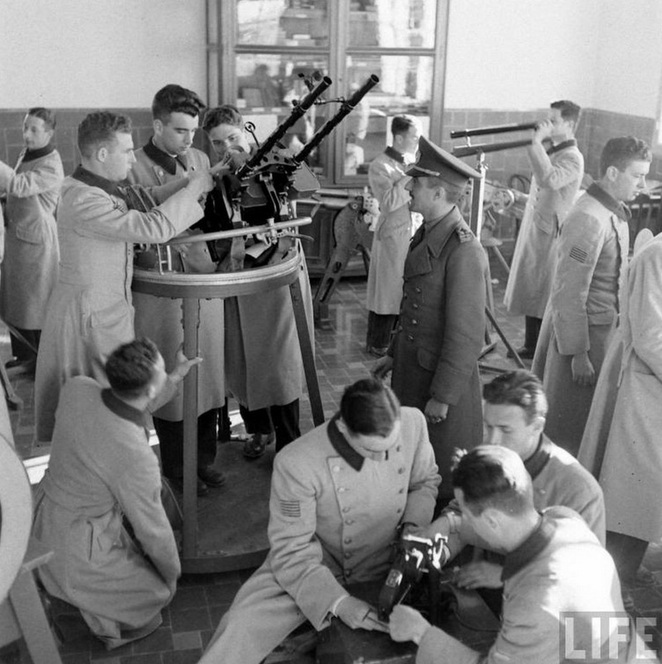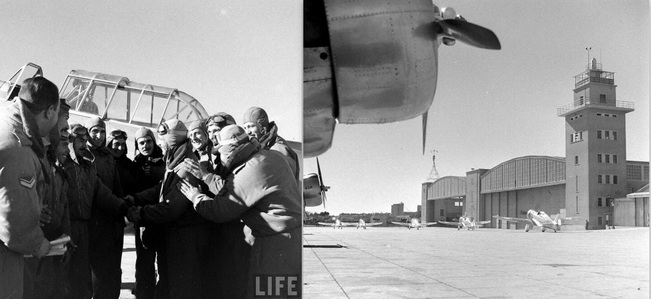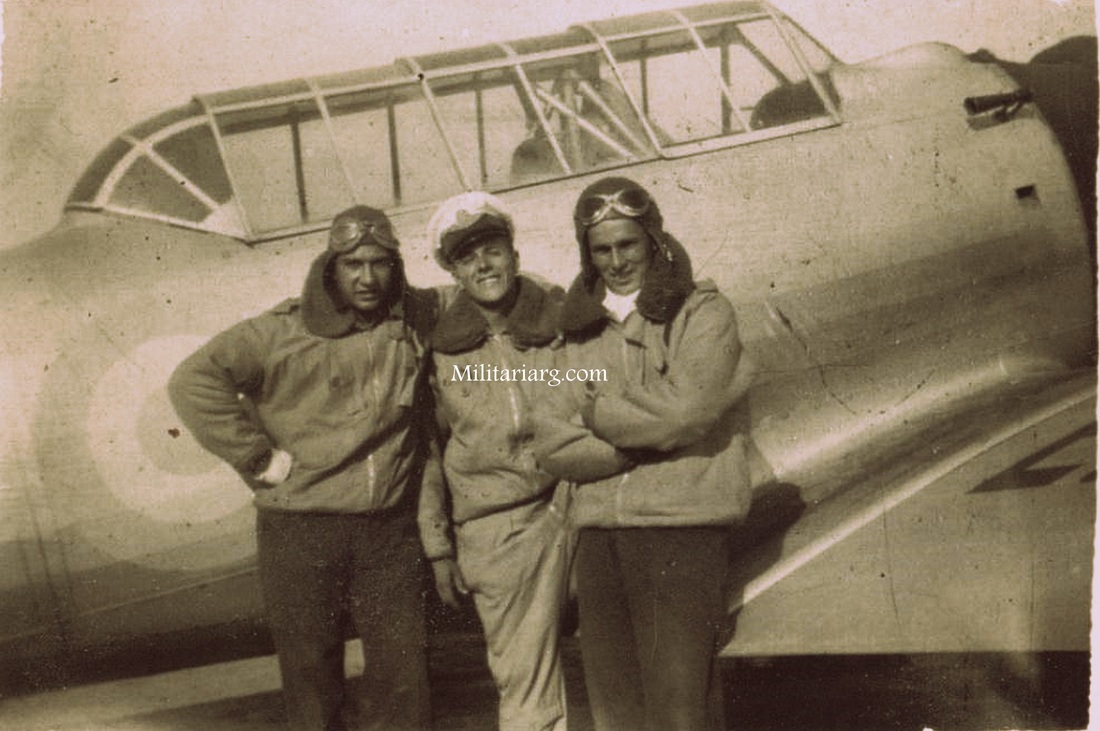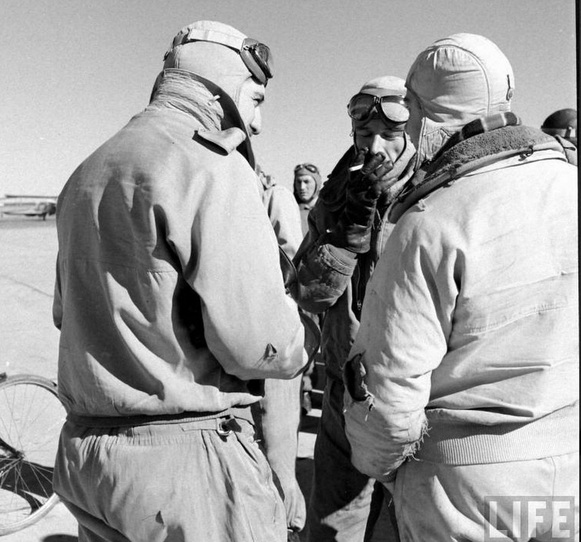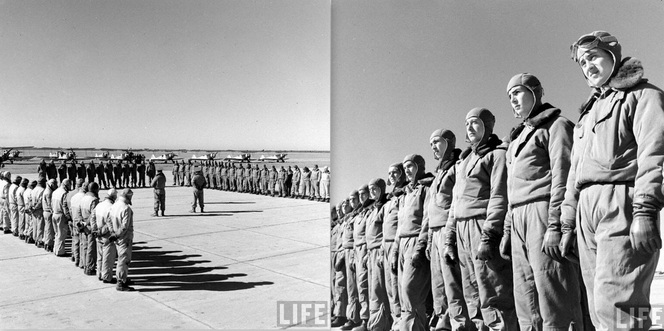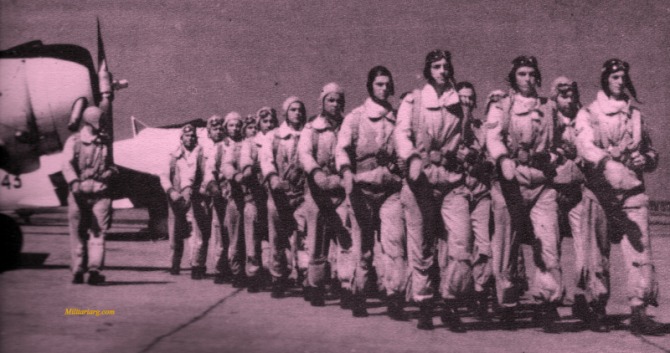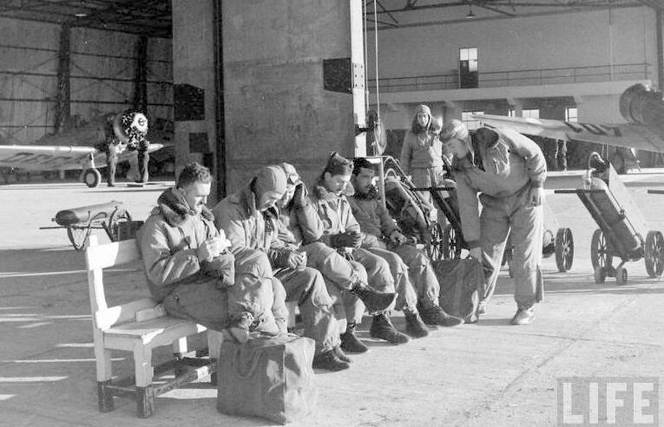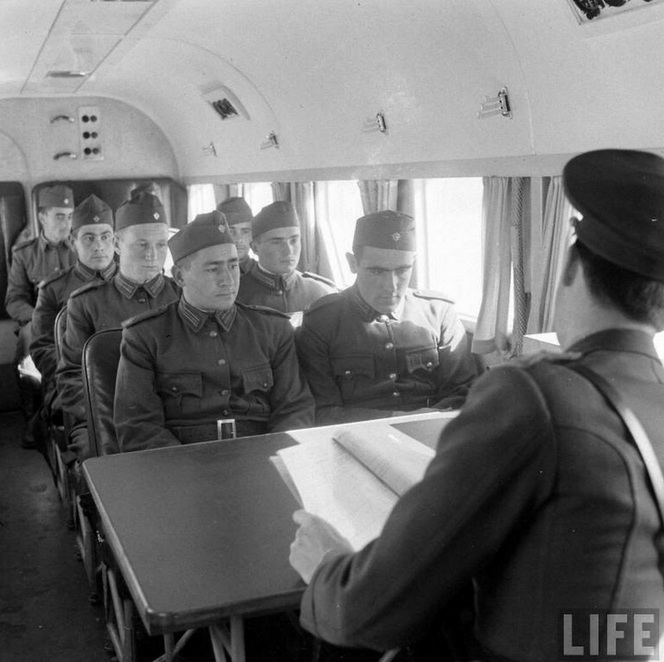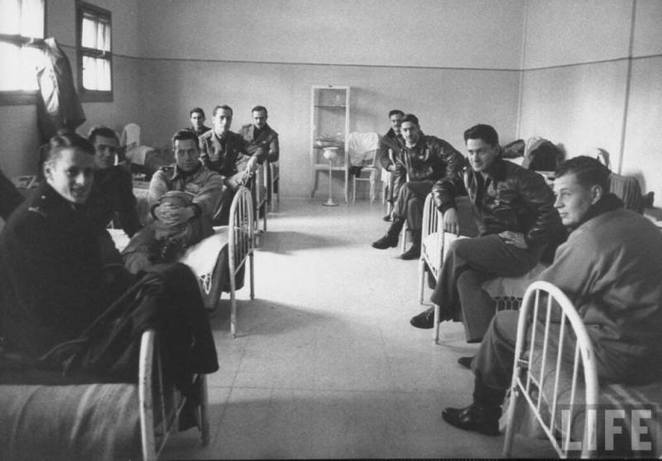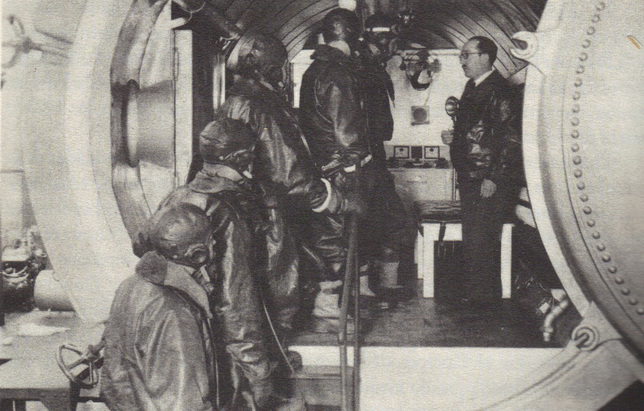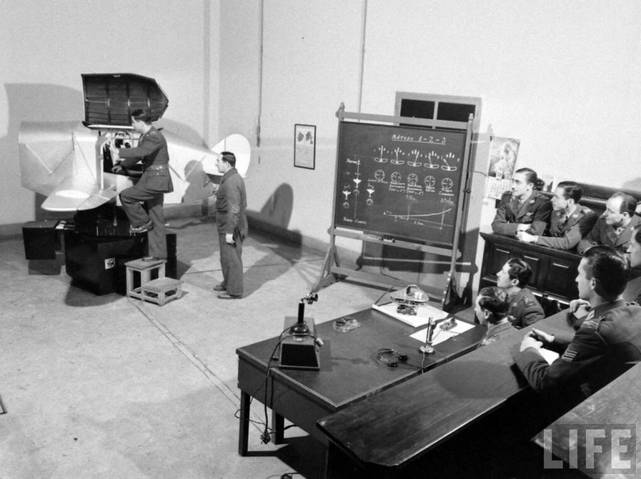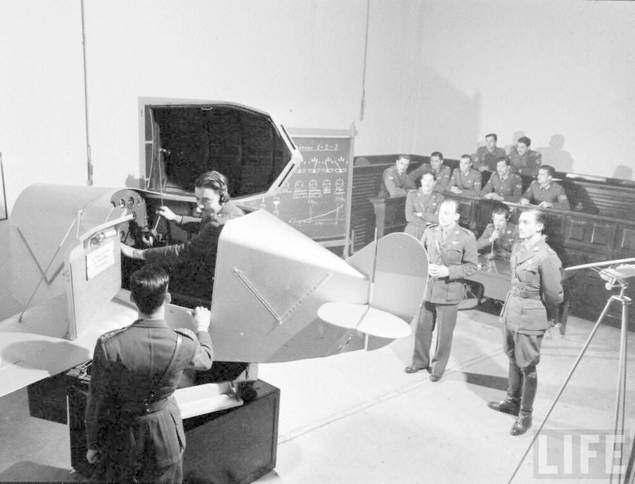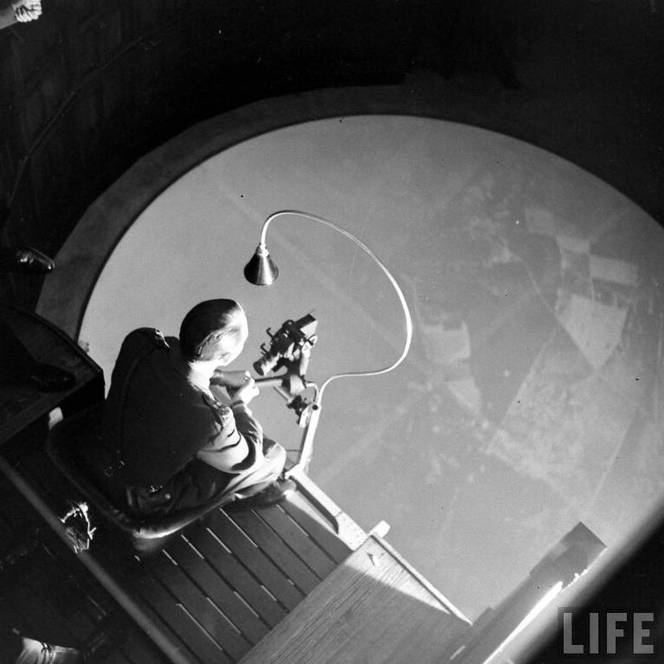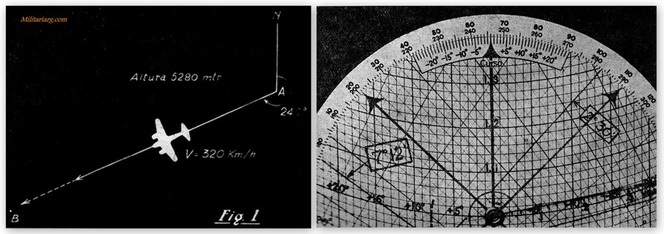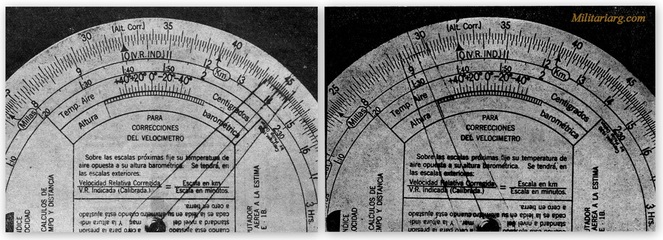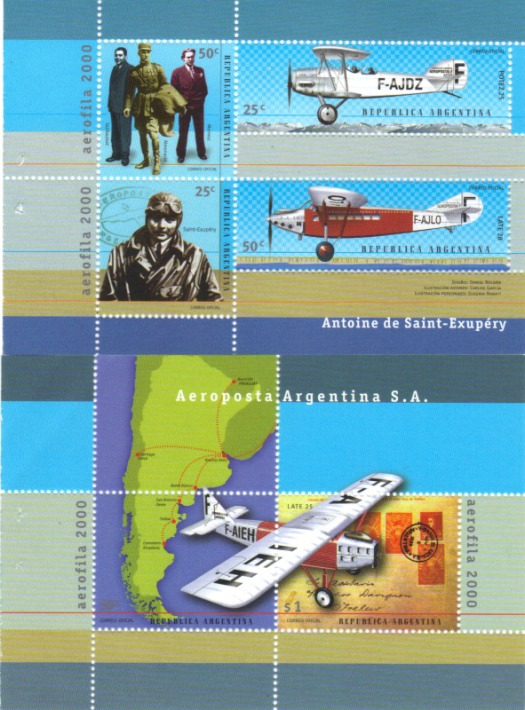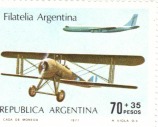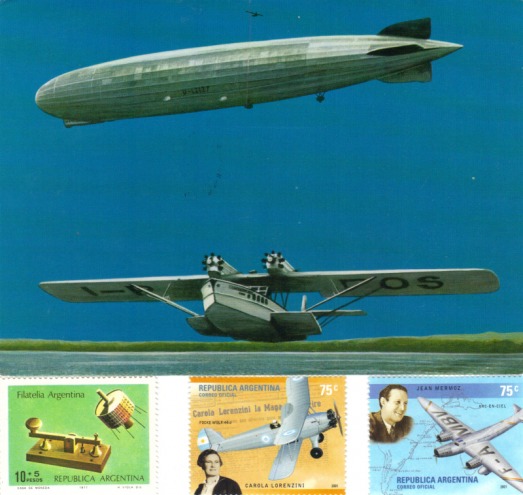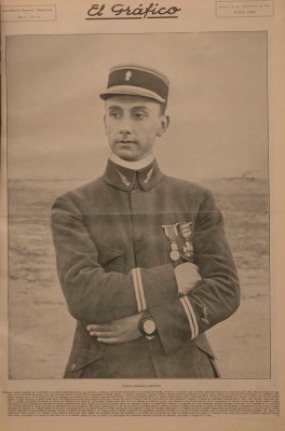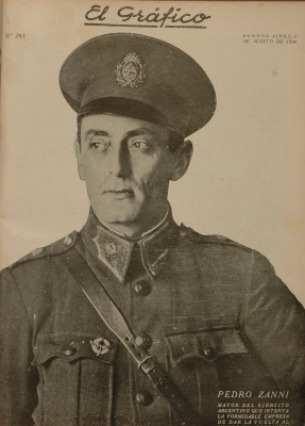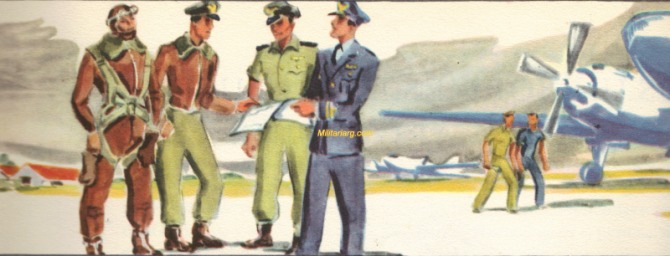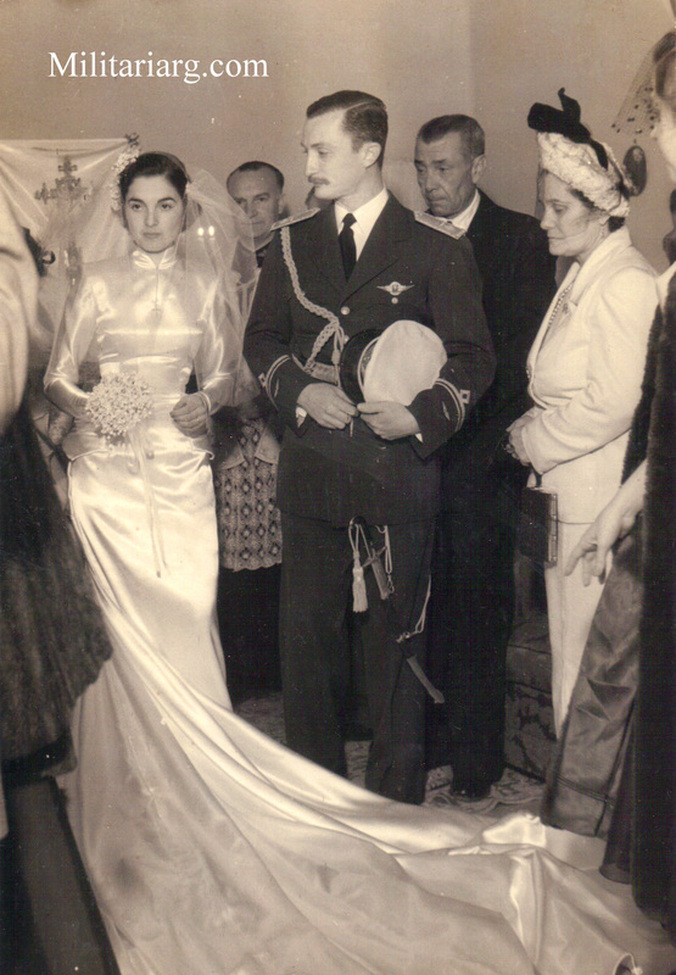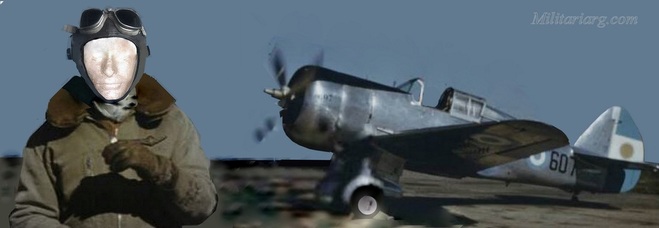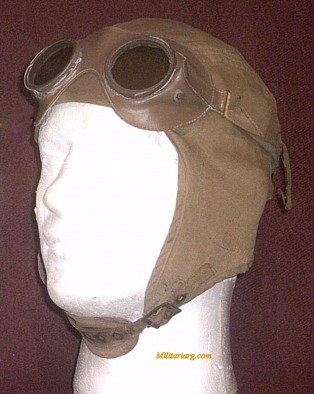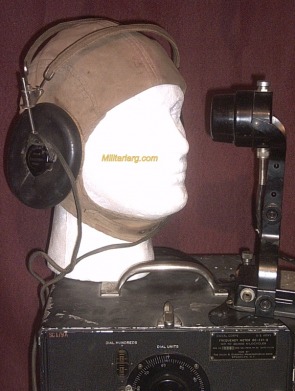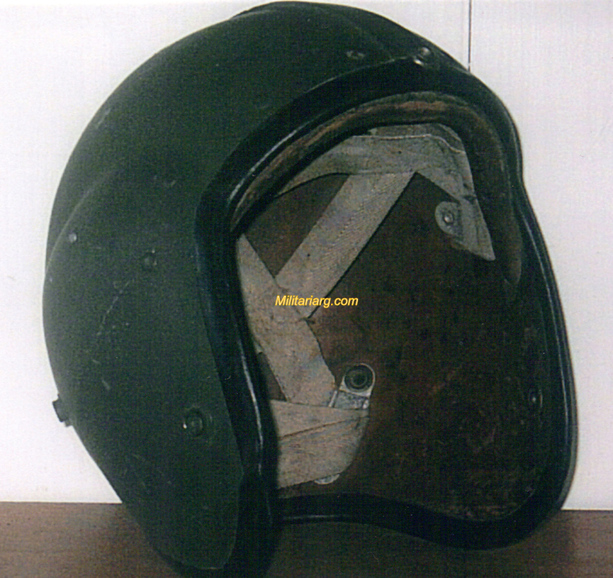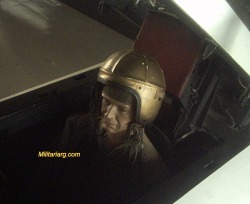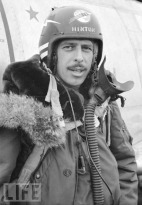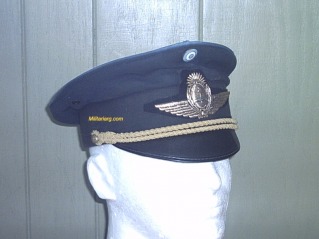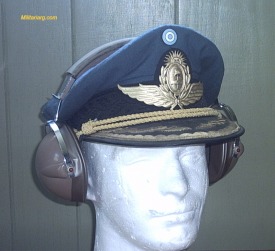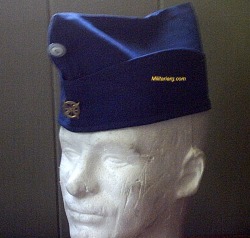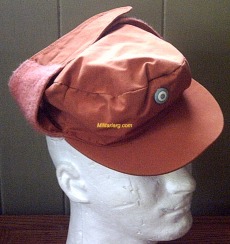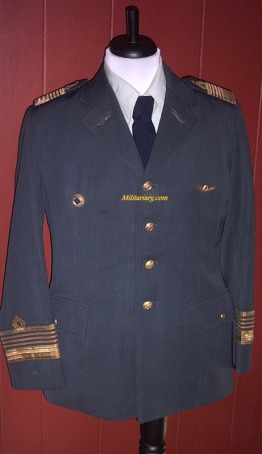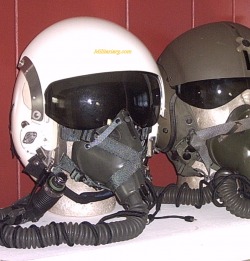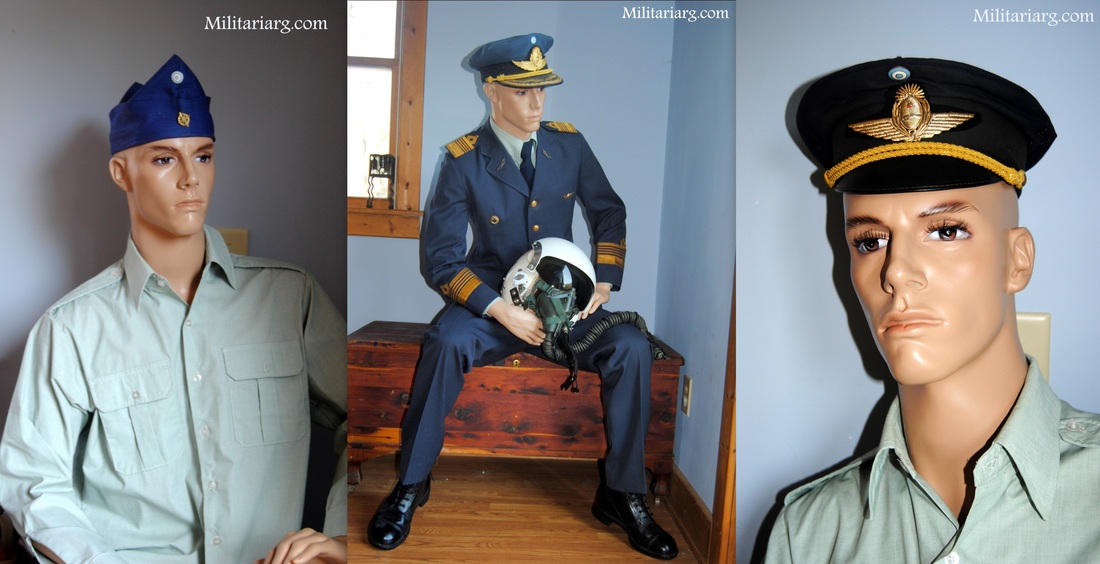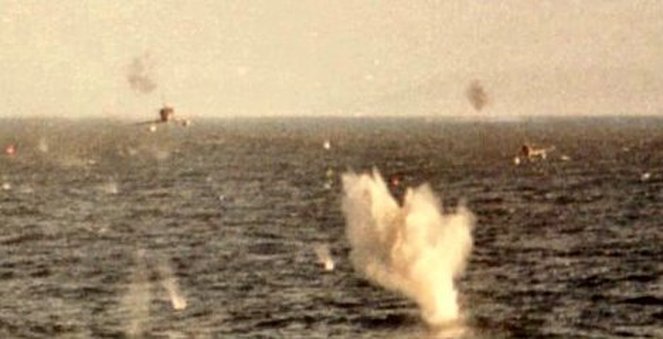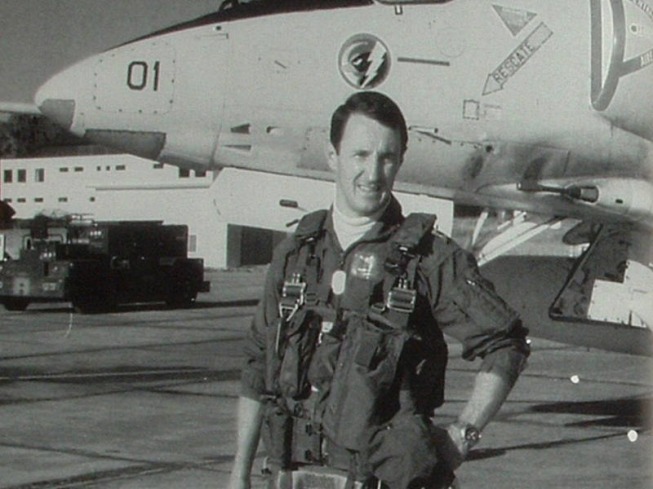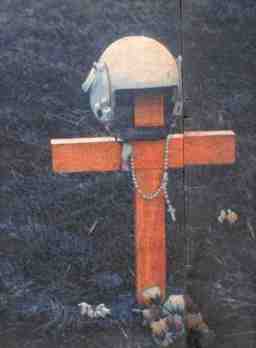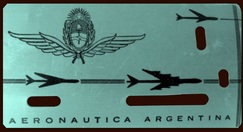Postcard of Argentine military pilot from the 1920s. Right: Argentine Pilot from 1940s.
Fiat G.55 "Centauro"
Fiat G.55 "Centauro". Argentine pilot from the 1940s.
WWII High Altitude Italian Oxygen Mask and Leather Cap. Smithsonian Air and Space Museum.
Right: Leather flight training helmet for Gosport speaking tubes.
Pioneer Pilots
Enlisted soldier Teodoro Fels crosses the cities of Buenos Aires and Montevideo breaking the world record for flight over water. The photo shows him taking off the life preserver when the Bleirot airplane (powered by a 50 hp engine) descended to Montevideo.
Upon his return to Buenos Aires he was arrested for leaving the country without permission. While serving his sentence, he was pardoned by the president and even ascended in rank. His feat inspired 2 tangos, "El Cabo Fels" by Pedro Sofia and "Don Teodoro" by Vicente Mazzolo. Photos from "Alas Argentinas" magazine.
Conscripted soldier in an aerial unit. Note the holes over the pocket that should have been for the insignia. At that time the conscripts could be pilots.
1st Lieutenant Raul Goubat begins his aerial education in 1910 in the air base school "El Palomar". He was in the first graduating class of 1914. That same year a serious accident made him retire from flying and the military. Photo from "Alas Argentinas" magazine. Note the Civilian Style Helmet.
Above left is the first airplane built in Argentina. It was a biplane. Though there were many attempts, it never managed to take flight. Above right is Monoplano Bleriot (50 hp).
Above left is a Biplano Farman (50 hp). The country's first military aviation courses used them beginning in 1912. Above right is a momnoplane built by Pablo Castaibert.
Left: Monoplane Morane Saulnier which was used by Jorge Newbery on February 10, 1914 to reach an elevation never registered before in the world. Right: H. Farman biplane 80 HP.
Above is the "Pampero" which initiated aeronautical activity in Argentina. It first took off on December 25, 1907 with Jorge Newbery as its first passenger. It had been given a life preserver from the Navy with the name "Pampa" printed on it (it was the name of one of their ships). Engineer Horacio Anasagasti and Doctor Eduardo Newbery (brother of Jorge) built the Pampero. On October 17, 1908 Eduardo Newbery and Sargeant Eduardo Romero were lost in the ocean while flying the Pampero.
Source: Alas Argentinas
Source: Alas Argentinas
Above left are Second Lieutenant from the reserves Eduardo Bradley and Captain Angel Maria Zuloaga who crossed the Andes from Santiago de Chile to Uspallata in the "Eduardo Newbery" in 3.5 hours. They had to reach a height of 8,000 meters. This feat garnished worldwide attention. Observe the stetson campaign-style hat. Above right is Lieutenant Luis C. Candelaria, the first aviator to cross the Andes. He started in Zapala, Neuquen and 2 hours later arrived in Cunco, Chile on April 13, 1918.
|
Lieutenant Alfredo S. Agneta was a student of the first course in the Escuela de la Compania Aerea Argentina. He graduated with the number 19. He was the second Argentine officer to die in an aviation accident. His death occurred in Palomar on October 28, 1914 along with Felipe Madariaga as he was doing his infamous aerial stunts.
|
Lieutenant Manuel Felix Origone, the first victim of Argentine aviation. While he served in an aerial race between Buenos Aires and Mar del Plata on January 19, 1913, he crashed in the town of Domselaar.
|
|
The double monplane Nieuport (165 hp) used by Lieutenant Matienzo on May 28, 1919 in his attempt to cross the Andes.
|
Lieutenant Benjamin Matienzo who died in his attempt to cross the Andes on May 28, 1919. Thirty years later, on February 4, 1950, an Andean military commission found the remains of his crash. Observe the collar patches with metal numbers, shoulder boards and steering wheel with wings that became the symbol of pilots.
|
While he prepared to cross the Andes, Jorge Newbery toured the great mountain by mule in order to study the air currents, wind direction and climatic conditions. The photo was taken by Teodoro Fels from the plane in which this extraordinary aviator later passed away.
Jorge Newbery was a well known Argentine of North American descent. His father went to Argentina from Long Island, New York after the US Civil War (he is said to have participated in the Battle of Gettysburg). Jorge Newbery was one of the first Latin American pilots, as well as an engineer. During his career he served as president of the Aero Club Argentina. He started as an aerostat balloon pilot and then moved on to the engine-propelled aircraft that arrived to Argentina in 1910. He played a part in Argentina becoming the first country in Latin America to have militarized air force. Newbery died in a plane crash on March 1, 1914 in the province of Mendoza.
Sources: Alas Argentina and Wikipedia
Jorge Newbery was a well known Argentine of North American descent. His father went to Argentina from Long Island, New York after the US Civil War (he is said to have participated in the Battle of Gettysburg). Jorge Newbery was one of the first Latin American pilots, as well as an engineer. During his career he served as president of the Aero Club Argentina. He started as an aerostat balloon pilot and then moved on to the engine-propelled aircraft that arrived to Argentina in 1910. He played a part in Argentina becoming the first country in Latin America to have militarized air force. Newbery died in a plane crash on March 1, 1914 in the province of Mendoza.
Sources: Alas Argentina and Wikipedia
Moment when Argentine aviator Jorge Newbery tries to break the world record for height with his airplane Morane Saunier. Note the details of the oxygen pipestem assembly. In the early years of oxygen use, hight flying aeronauts and aviators were provided with delivery tubes equipped with a mouthpiece or "pipestem" into wich oxygen flowed continuously from a cylinder worn with a face mask while a pilot was flying in an open cockpit, this assembly was used throughout from 1920s and 1930s. Photo from "Alas Argentinas" magazine. Source: Smithsonian National Air Space Museum. D.C.
Left: Type A-8B Oxygen Mask (1940s). Right: Oxygen Pipestem Assembly, (1920s-1930s). National Air Space Museum W.DC.
On March 9, 1920, Captain Antonio Parodi became the first aviator who effected a double crossing of the Andes without descents. This extraordinary pilot, who dedicated his existence to aeronautics, reached the highest ranks in the aerial armed services. He was Commander of Aviation in the Army and retired from active service in 1946 as Brigadier. Note the Heavy brown leather helmet.
Source: Alas Argentinas
Source: Alas Argentinas
Lieutenant Pedro L. Zanni with Raul A. Apold in Punta de Vacas after their accidental descent to the Andes when they tried to cross them in the Morane Saulnier which belonged to Jorge Newbery. This photo is from 1917. Zanni would go on to pilot a Dutch 2-seat reconnaissance aircraft Fokker C IV in the 1920s. He also did doubling-crossing of the Andes in his monoplane Morane Saulnier Parasol (80 hp) and participated in the Amsterdam-Tokyo race, giving him worldwide prestige.
Human Factor
The first pilots was a leather winter flying helmet is brown with A-N 6530 type goggles. The rest appear to have the summer style helmet which is made of canvas, type A-9 or a lighter colored leather. The was a vast variety of flying helmets.
Pneumatic camera
Simulator
Computer Dalton E-1 model B (1933) "Whiz Wheel", for air navigation.
Directions to take and wind.
The device's original name is E-6B, but is often abbreviated as E6B, or hyphenated in other variations for commercial purposes.
The E-6B was developed in the United States by Naval Lt. Philip Dalton in the late 1930s. The name comes from its original part number for the U.S Army Air Corps in World War II.
Philip Dalton (1903-1941) was a Cornell University graduate who joined the United States Army as an artillery officer, but soon resigned and became a Naval Reserve pilot from 1931 until he died in a plane crash with a student practicing spins. He, with P. V. H. Weems, invented, patented and marketed a series of flight computers.
Dalton's first popular computer was his 1933 Model B, the circular slide rule with True Airspeed (TAS) and Altitude corrections pilots know so well. In 1936 he put a double-drift diagram on its reverse to create what the US Army Air Corps (USAAC) designated as the E-1, E-1A and E-1B.
A couple of years later he invented the Mark VII, again using his Model B slide rule as a focal point. It was hugely popular with both the military and the airlines. Even Amelia Earhart's navigator Fred Noonan used one on their last flight. Dalton felt that it was a quickie design, and wanted to create something more accurate, easier to use, and able to handle higher flight speeds.
So he came up with his now famous wind arc slide, but printed on an endless cloth belt moved inside a square box by a knob. He applied for a patent in 1936 (granted in 1937 as 2,097,116). This was for the Model C, D and G computers widely used in World War II by the British Commonwealth, the U.S. Navy, and even copied by the Japanese and Germans. These are commonly available on collectible auction web sites.
The E-6B was developed in the United States by Naval Lt. Philip Dalton in the late 1930s. The name comes from its original part number for the U.S Army Air Corps in World War II.
Philip Dalton (1903-1941) was a Cornell University graduate who joined the United States Army as an artillery officer, but soon resigned and became a Naval Reserve pilot from 1931 until he died in a plane crash with a student practicing spins. He, with P. V. H. Weems, invented, patented and marketed a series of flight computers.
Dalton's first popular computer was his 1933 Model B, the circular slide rule with True Airspeed (TAS) and Altitude corrections pilots know so well. In 1936 he put a double-drift diagram on its reverse to create what the US Army Air Corps (USAAC) designated as the E-1, E-1A and E-1B.
A couple of years later he invented the Mark VII, again using his Model B slide rule as a focal point. It was hugely popular with both the military and the airlines. Even Amelia Earhart's navigator Fred Noonan used one on their last flight. Dalton felt that it was a quickie design, and wanted to create something more accurate, easier to use, and able to handle higher flight speeds.
So he came up with his now famous wind arc slide, but printed on an endless cloth belt moved inside a square box by a knob. He applied for a patent in 1936 (granted in 1937 as 2,097,116). This was for the Model C, D and G computers widely used in World War II by the British Commonwealth, the U.S. Navy, and even copied by the Japanese and Germans. These are commonly available on collectible auction web sites.
Calculation speed and wind speed. Argentine NCO Magazine, 1938 and Wikipedia..
Airplanes stamps.
Official photo from the historic archives of Lufthansa (Argentine airline). You can see the Dornier Super Wal airplane in the moment of liftoff while a Zeppelin flies above it.
The Air Force separated from the Army in 1944. A new force was created that at first was called Aeronautical then later the Air Force. The uniforms of the Air Force were originally from the Army with a jacket and cap in blue grey; the emblem on the cap was the national shield with 2 open wings and on the open jacket collar the insignia of propellers with the steering wheel. The insignia of the Aviation School was adopted by the Air Force. The drawings pertained to an old aeronautical document from the Argentine Air Force from the era of its creation.
Source: Los Cuerpos Militares en la Historia Argentina 1550-1950 by Julio Mario Luqui-Lagleyze
Source: Los Cuerpos Militares en la Historia Argentina 1550-1950 by Julio Mario Luqui-Lagleyze
Excellent photo of the wedding of a Lieutenant (pilot) in the newly formed Argentine Air Force. The officer is wearing a ceremonial uniform in electric blue, white shirt and black tie. He may have an honor guard considering the other uniformed men around him.
Collectibles and Militaria items
This photo shows another headset style, over a frequency meter BC221. The image represents a bomber crew member from WWII. The pilot helmet is an American training helmet in a summer cloth from WWII, the same style as Argentine pilots in the 1940s and 1950s. There was a repackaging of the BC221 called the TS-164 which had the same benefits of the permanently mounted LM series frequency meters. It made a non-issue of storage factors, elimated the risk of battery loss during long flights and was a clean installation.
This is an early MKI British Fighter Pilot Helmet in pressed leather with suspension system liner..
Gloster, as a manufacturer, took in a large number of aircraft types. The only post-war jet in service was the Meteor. Most photos of it show pilots wearing WWII leather headgear type "C". The Mk.1 would have been used in later jets. I have an unissued Mk.1 with G-type inner liner and M-type mask as used in the Canberra bomber. The Mk.1 was replaced by the 1-piece Mk.2 which did not require a separate inner liner to support the communications set.
Above left is a US Korean War USN/USMC type H-3 or H-4 hard fiber protective helmet. The plane is a Lockheed T-33 "Shooting Star". Above right is a photo from Life Magazine of a pilot for an F-86 Sabre with Helmet Type P1.
|
To the left is an Air Force Commodore (Comodoro), jacket from the Malvinas War era.
Above is a helmet type HGU-26, modified with a PRU-36/P dual visor kit. The helmet has a Sierra MBU-5/P oxygen mask. This type of flight gear, USAF/US Navy and NATO type were utilyzed by the Argentine pilots during the Malvinas War. |
Malvinas Campaign
Lieutenant CommanderAlberto Jorge Philippi in front of his A-4Q Skyhawk. On May 21, he was shot down by a Sea Harrier (800 NAS) after attacking the Type 21 frigate HMS Ardent.
What appears to be the remains of an HGU-2A/P pilot helmet at a tomb in Malvinas.
